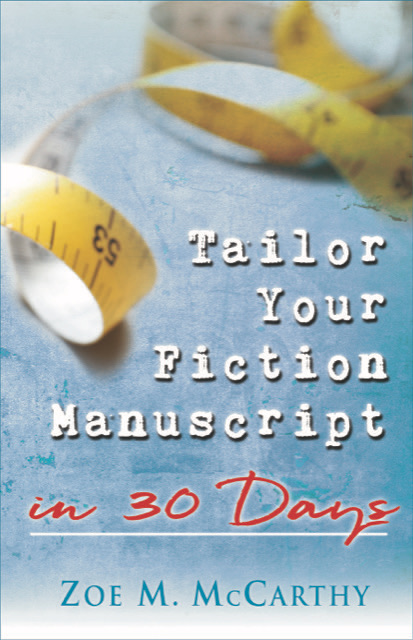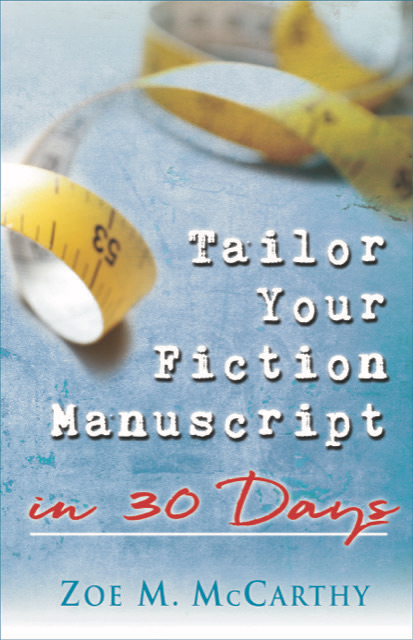
Zoe’s book, Tailor Your Fiction Manuscript in 30 Days, is a fresh and innovative refocusing of your novel or novella. Through a few simple—and fun—steps, Zoe helps writers take their not-ready-for-publication and/or rejected manuscripts to a spit-polish finish. Writing is hard work, yes, but it doesn’t have to be difficult. —Eva Marie Everson, best-selling and multiple award-winning author, conference director, president of Word Weavers International, Inc.
Learn more at the end of the post.
Don’t lose potential readers. To pull readers into your story, you’ll want to include six elements in the first five pages. In Part 1, we’ll cover two. The full six will help you to
- hook your reader;
- place the reader immediately into your story;
- ground your reader in the who, where, and when; and
- persuade the reader your story is worth reading.
1 Intriguing Opening
image by geralt
Begin your story with sentences that make your reader ask a question they want to know the answer to.
Example:
Gretchen wiped tears from her cheeks and breathed in fresh air bearing a pleasant gardenia scent. So this was what being outside felt like. She lifted her face to the sunshine warming her head and shoulders. Her seven-month confinement was over.
Questions the reader might ask:
Where has she been that she hasn’t been outside for seven months? Why was she confined?
2 Grounding the Reader
As soon as possible, let your reader know the who, where, and when.
Suppose after the opening hook and into the second page of the story, Gretchen thinks about the things she wants to do in her new freedom. She rises to her feet and takes a few shaky steps, then turns back and sits down. Then a man adjusts his work hat and says, “Let me help you inside.”
Now your reader is asking different questions, but these questions stem from confusion. Where is Gretchen? What is she sitting on? Who is this man? And he wants to help her inside what?
The reader is confused.
The reader’s possible thoughts:
Where: Is she outside a hospital? Why didn’t people take her outdoors during her long stay? That’s unrealistic. People would have taken her outside in a wheelchair. Maybe she was in a coma. That could be the answer. She’s probably sitting in a wheelchair now.
Who: But wouldn’t someone be beside her to help her? Where’s the person who pushed the wheelchair? Is the man who spoke the one who pushed the wheelchair? Or is he a driver of a car that’ll take her away? Or is he the aide who’ll take her back inside the hospital?
When: Well, at least I know it’s daytime. The man adjusts his work hat. If he’s a taxi or ambulance driver, they don’t wear company hats anymore. Neither would a hospital aide. Maybe the story takes place in the past.
I’m confused!
The reader puts the book down.
Do you really want your reader going through all that rumination?
Grounding after the opening lines:
Gretchen is sitting on a porch step of an old Virginia farmhouse, tears spilling from her eyes. Her seven-month ordeal is over.
Two police cars are parked askew out front. The husband and wife who held Gretchen captive sit cuffed in a police cruiser’s backseat. Sirens blare in the distance.
The sun has become intense. As Gretchen stands and walks toward a bench under a shade tree, a Virginia State patrol car arrives. The trooper climbs out of the vehicle and adjusts his broad-rimmed campaign hat.
The bright sunlight and Gretchen’s weakness make her woozy. The trooper steps forward and says, “Let me help you to the bench.”
You get the idea.
Join me next month to look at:
- The protagonist’s ordinary world
- Hinting at the protagonist’s inner and external goals
What in the first five pages makes you put a book down?

I finished reading Tailor Your Fiction Manuscript in 30 Days. I have AND will highly recommend it to anyone who dabbles in fiction. It’s one of the best “how to” books I’ve ever read.
—Marsha Hubler, Director Montrose Christian Writers Conference
If you want to increase your chance of hearing yes instead of sorry or not a fit for our list at this time, this book is for you. If you want to develop stronger story plots with characters that are hard to put down, this book is for you. Through McCarthy’s checklists and helpful exercises and corresponding examples, you will learn how to raise the tension, hone your voice, and polish your manuscript. I need this book for my clients and the many conferees I meet at writer’s conferences around the country. Thank you, Zoe. A huge, #thumbsup, for Tailor Your Fiction Manuscript in 30 Days.
—Diana L. Flegal, literary agent, and freelance editor
Tailor Your Fiction Manuscript is a self-editing encyclopedia! Each chapter sets up the targeted technique, examples show what to look for in your manuscript, then proven actions are provided to take your writing to the next level. Whether you are a seasoned writer or a newbie, you need this book!
—Sally Shupe, freelance editor, aspiring author
Need to rework your book? Zoe M. McCarthy’s step-by-step reference guide leads you through the process, helping you fight feeling overwhelmed and wrangle your manuscript into publishable shape in 30 days. Tailor Your Manuscript delivers a clear and comprehensive action plan.
—Elizabeth Spann Craig, Twitteriffic owner, bestselling cozy mystery author of the “Myrtle Clover Mysteries,” the “Southern Quilting Mysteries,” and the “Memphis Barbeque Mysteries,” http://elizabethspanncraig.com/blog/
Zoe has developed a guiding resource for beginning writers. Her method is designed for brainstorming, shaping, and revising the early draft of a manuscript. General and specific tips are offered for applying rules of writing to enhance one’s story for a workable second draft. By exploring the plot line of Love Comes Softly, writers may examine their own work for stronger plot and characterization. Valuable tools are offered that enable the writer to develop a workable draft in only 30 days!
—Yvonne Lehman, award-winning, best-selling author of 48 novels
Tailor Your Fiction Manuscript in 30 Days is chock-full of practical techniques. Numerous examples clarify problem areas and provide workable solutions. The action steps and blah busters McCarthy suggests will help you improve every sentence, every paragraph of your novel. If you follow her advice and implement her strategies, a publisher will be much more likely to issue you a contract.
—Denise K. Loock, freelance editor, lightningeditingservices.com
A concise, detailed, step by step resource for all writers.
— Jamie West, editor coordinator, Pelican Book Group
Zoe’s writing blog has always intrigued me. As a high school English teacher, I can attest that her tips on good grammar and her hints for excellent sentence and paragraph structure are spot on. But as an author, I also appreciate her ever-present advice that excellent skills are not enough: you must tell a good story, too. This book clearly shows how to do it all.
—Tanya Hanson, “Writing the Trails to Tenderness,” author of Christmas Lights, Outlaw Heart, Hearts Crossing Ranch anthology, and coming in 2019, Tainted Lady, Heart of Hope, and Angel Heart. www.tanyahanson.com
McCarthy crafted an amazing self-help book that will strengthen any writer, whether new or seasoned, with guidance and self-evaluation tools.
–Erin Unger, author of Practicing Murder, releasing in 2019







 RSS - Posts
RSS - Posts



Good clarification. I’ve been working with my 10 year old grandson this year on Facetime and Zoom on reading. He has made great progress, and is starting to create his own stories. I’m going to share thus with him.
Love this analysis of establishing the 5 W’s in the opener.